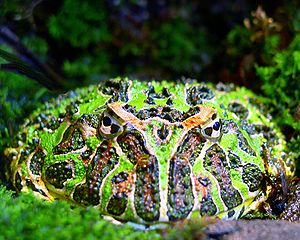The Green or Carolina Anole, Anolis carolinensis, has introduced generations of herp enthusiasts to reptile-keeping. Small, active, and willing to breed in captivity, this handsome arboreal lizard makes a wonderful pet. Although associated with “beginners”, Green Anoles are complex creatures, well able to hold the interest of lifelong herpetologists and pet keepers, myself included. A huge array of relatives (there are over 370 anole species!), many available in the pet trade, can be kept in a similar manner. Today I’ll review supplies for Anoles and similar lizards to get you started off right. Please see the linked articles, and post questions below, for detailed information on care and breeding.
The Terrarium
Although small, Green Anoles active and require spacious terrariums; they become stressed in tight quarters. A single animal can be housed in a 15 gallon tank; pair or trio should be provided with a 20 gallon aquarium.
The Zoo Med Repti-Breeze Aluminum/Screen Cage is perhaps the best option. It provides critical air circulation and, when placed outdoors, also allows for UVB exposure (glass and plastic filter-out UVB rays).
The extra-tall Exo Terra Terrarium can also be fashioned into an excellent anole habitat.
Terrarium Furnishings
Numerous branches should be provided, along with plants and vines. Anoles will be stressed in a bare terrarium – plants provide “sight barriers” that offer security and ease aggression among tank-mates. Read More »
 That Reptile Blog – Reptile, Amphibian and Exotic Pet Care and Information
That Reptile Blog – Reptile, Amphibian and Exotic Pet Care and Information





